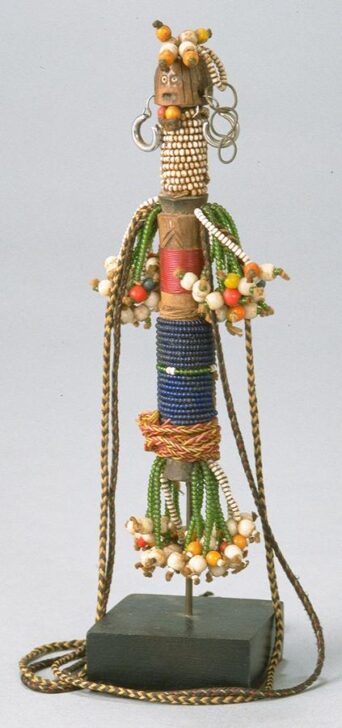Fertility Figure
Fali; Dowayo

Description
Subject Matter:
This object may have been made by the Fali peoples of Cameroon, who are often labelled as ‘Kirdi’. Fertility figures were carved by a newly engaged man for his wife-to-be. The figure, called ham pilu, reflected the expected first child. Until the child was born, the wife would care for the figure and carry it on her back. Once the first child was born, the figure would be stored away as a family heirloom.
There is also the possibility that this figure was made by the Dowayo peoples of Cameroon—also called Namchi or Namji. Blacksmiths created wooden dolls for women who had trouble conceiving; the doll was then decorated with beads to resemble a newly initiated woman. As a symbol of potential motherhood, women would treat the doll as a real child until they became pregnant.
References Cited:
Cameron, Elisabeth L. 1997. “In Search of Children: Dolls and Agency in Africa.” African Arts, Vol. 30, No. 2: pp. 18-33, 93.
Physical Description:
Columnar wooden figure decorated with beads. The figure has two small eyes and a mouth; the coiffure consists of a cluster of beads at the top of the head. There are small wire hoops on each side of the head. The neck is decorated with white seed beads while the torso is wrapped with red wire and blue beads. Strands of green and white beads form the limbs. The figure is attached to a large string of beads, possibly to wear the figure around a person's neck.
Usage Rights:
If you are interested in using an image for a publication, please visit https://umma.umich.edu/request-image/ for more information and to fill out the online Image Rights and Reproductions Request Form.